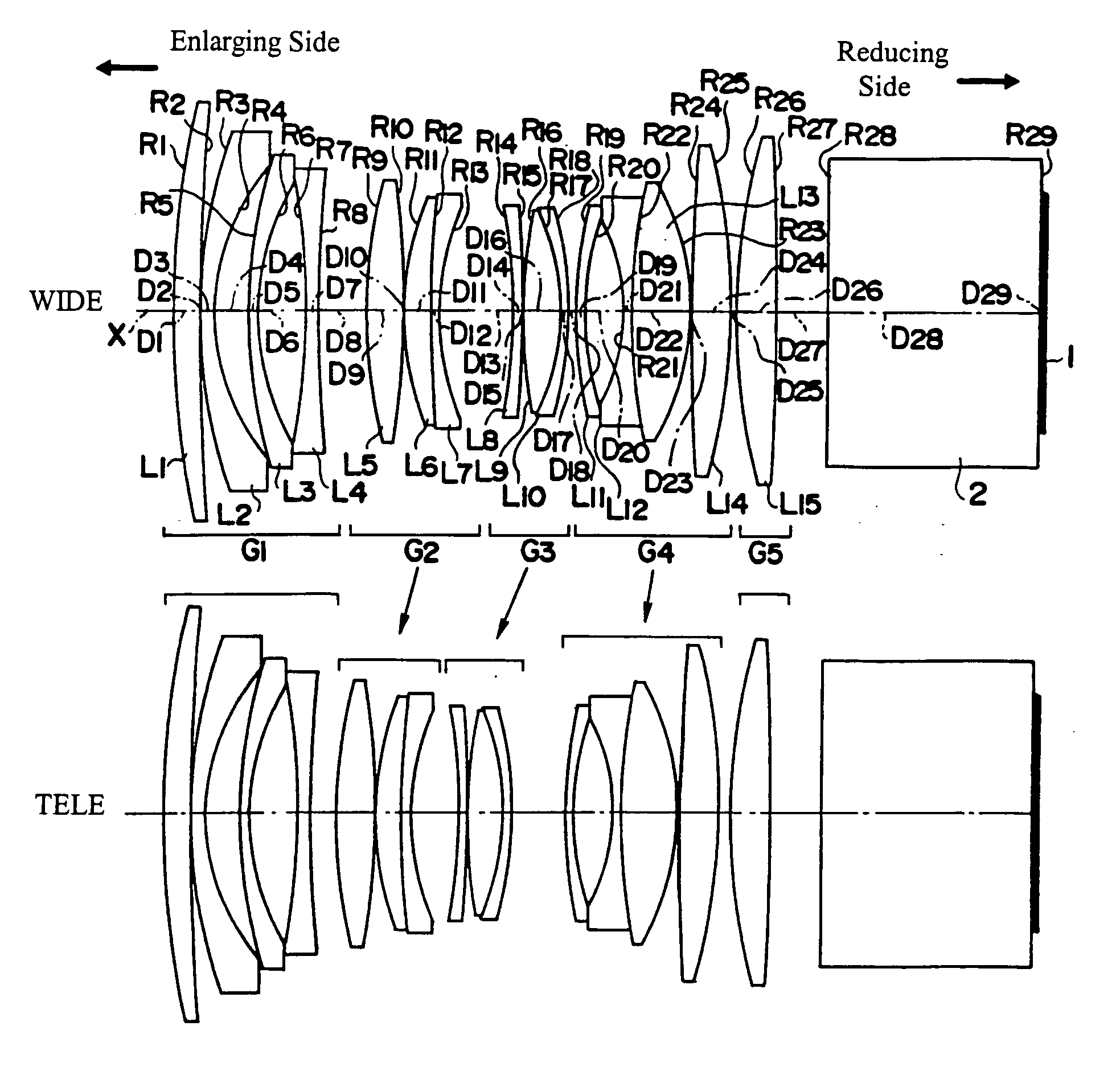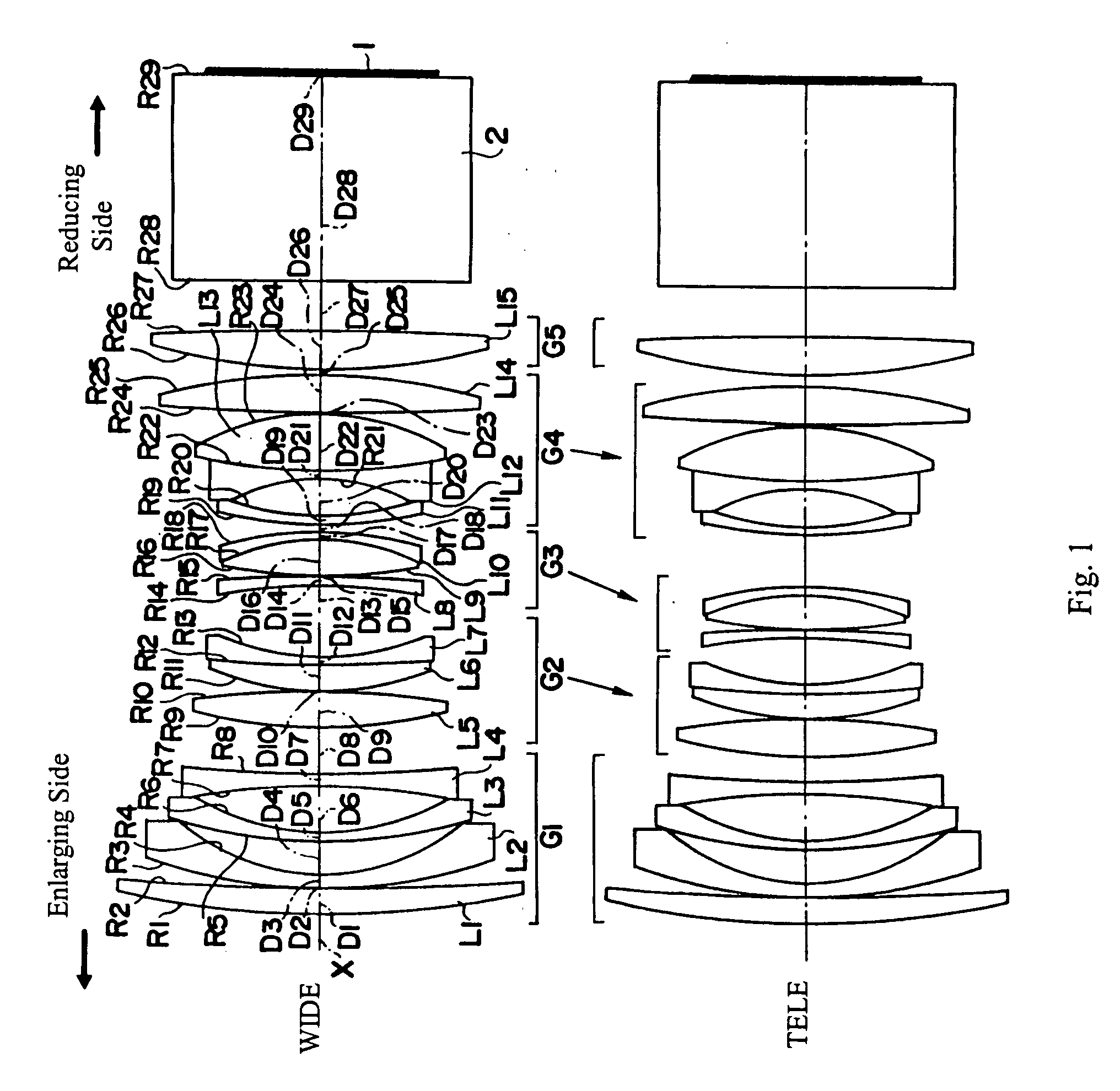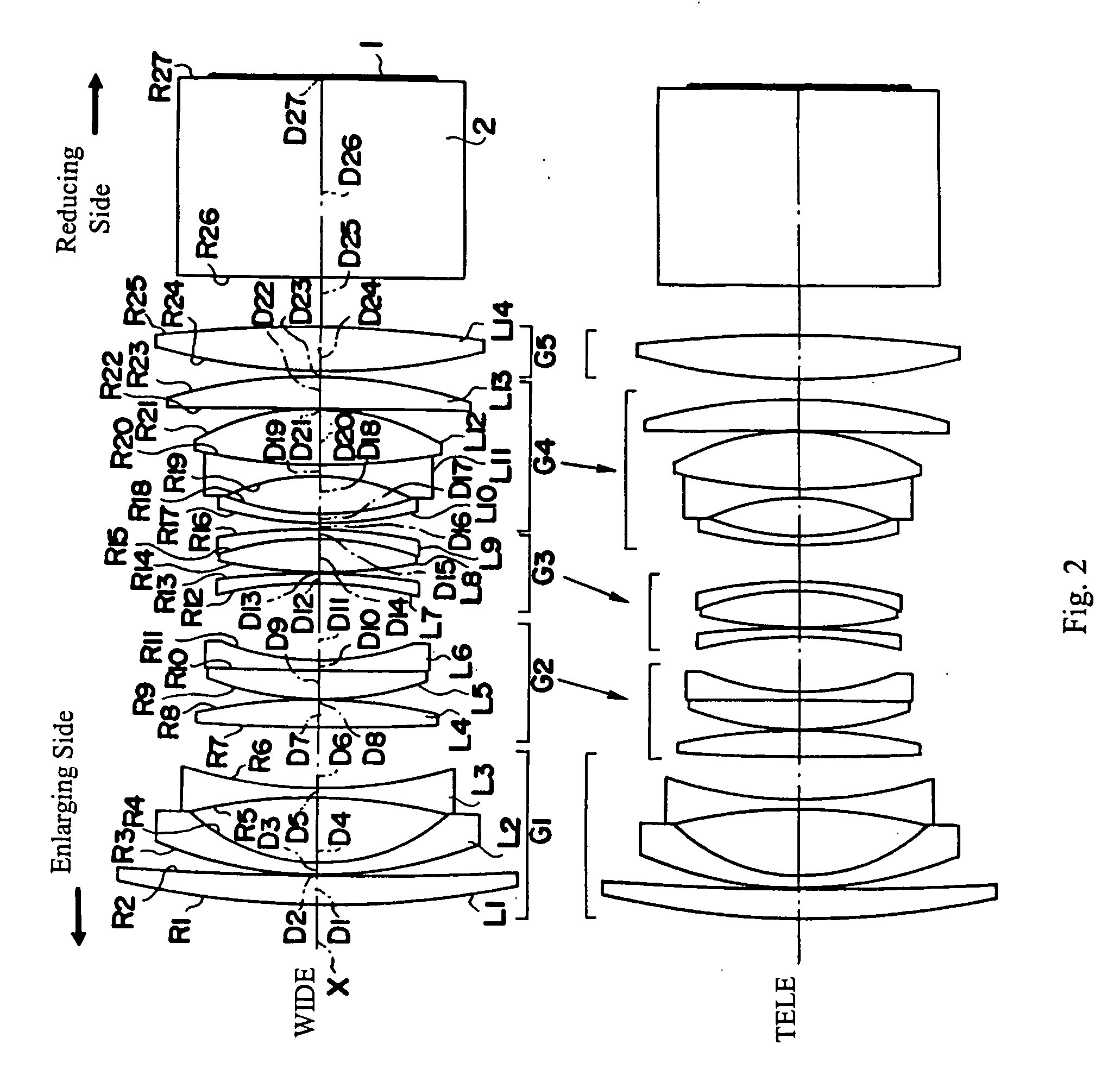Zoom lens and projection display device using the zoom lens
a technology of zoom lens and projection display device, which is applied in the field of zoom lens, can solve the problems of insufficient satisfaction of the requirements of the overall length of the lens system, and insufficient satisfaction of the requirements of the recent years of shortening the lens system. achieve the effect of short overall length, favorable aberration correction, and bright imag
- Summary
- Abstract
- Description
- Claims
- Application Information
AI Technical Summary
Benefits of technology
Problems solved by technology
Method used
Image
Examples
embodiment 1
[0045]FIG. 1 shows cross-sectional views of Embodiment 1 of the present invention at the wide-angle end (WIDE) and at the telephoto end (TELE), as discussed above. As shown in FIG. 1, the first lens group G1 includes, in order from the enlarging side: a first lens element L1 having positive refractive power and a meniscus shape with its convex surface on the enlarging side; a second lens element L2 having negative refractive power and a meniscus shape with its convex surface on the enlarging side; a third lens element L3 having negative refractive power and a meniscus shape with its convex surface on the enlarging side; and a fourth lens element L4 having a biconcave shape formed of surfaces with different radii of curvature, with the surface of stronger curvature on the enlarging side. The second lens group G2 includes, in order from the enlarging side: a fifth lens element L5 having a biconvex shape formed of surfaces with different radii of curvature, with the surface of stronger...
embodiment 2
[0052] Embodiment 2 is very similar to Embodiment 1 and uses the same number of lens elements. Because Embodiment 2 is very similar to Embodiment 1, only the differences between Embodiment 2 and Embodiment 1 will be explained for Embodiment 2. Embodiment 2 differs from Embodiment 1 in its lens element configuration by having different radii of curvature of the lens surfaces, different optical element surface spacings, and some different refractive indexes and Abbe numbers.
[0053] Table 4 below lists the surface number #, in order from the enlarging side, the radius of curvature R of each surface, the on-axis surface spacing D, as well as the refractive index Nd and the Abbe number vd (at the d-line of 587.6 nm) of each optical element for Embodiment 2, except that the on-axis surface spacings that vary with zooming are listed in Table 5 below. The numerical values of R and D are based on a normalized focal length of 1.00 at the wide-angle end configuration of the zoom lens of Embodi...
embodiment 3
[0058]FIG. 2 shows cross-sectional views of Embodiment 3 of the present invention at the wide-angle end (WIDE) and at the telephoto end (TELE). Embodiment 3 is very similar to Embodiment 1. Because Embodiment 3 is very similar to Embodiment 1, only the differences between Embodiment 3 and Embodiment 1 will be explained for Embodiment 3.
[0059] A primary difference between Embodiments 1 and 2 versus Embodiment 3 is that in Embodiment 3 the first lens group G1 includes only three lens elements that are lens components rather than four lens elements that are lens components. In particular, in Embodiment 3, the first lens group G1 includes, in order from the enlarging side: a first lens element L1 having positive refractive power and a meniscus shape with its convex surface on the enlarging side; a second lens element L2 having negative refractive power and a meniscus shape with its convex surface on the enlarging side; and a third lens element L3 that is biconcave having surfaces of di...
PUM
 Login to View More
Login to View More Abstract
Description
Claims
Application Information
 Login to View More
Login to View More - R&D
- Intellectual Property
- Life Sciences
- Materials
- Tech Scout
- Unparalleled Data Quality
- Higher Quality Content
- 60% Fewer Hallucinations
Browse by: Latest US Patents, China's latest patents, Technical Efficacy Thesaurus, Application Domain, Technology Topic, Popular Technical Reports.
© 2025 PatSnap. All rights reserved.Legal|Privacy policy|Modern Slavery Act Transparency Statement|Sitemap|About US| Contact US: help@patsnap.com



